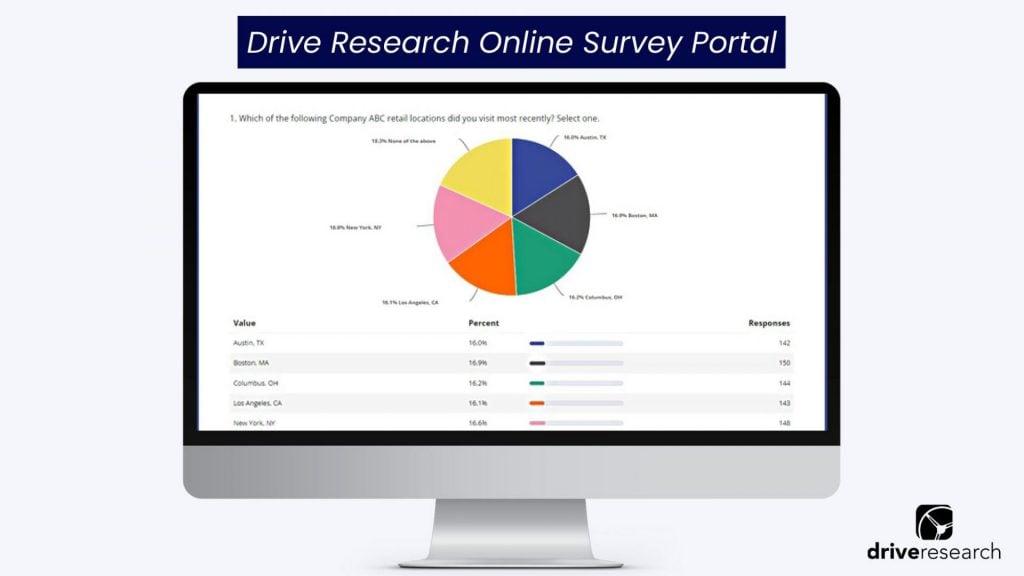
Political surveys are an important tool to understand the dynamics of political landscapes, habits, and perceptions.
This article covers the ins and outs of political surveys, explaining their significance, benefits, and the nuances to consider when to conduct them effectively.
What is a Political Survey?
To put it simply, political surveys cover any political-related topic. This may include voting habits, political opinions, public policy, and more.
Typically, these surveys reach out to a representative sample. This means the sampling goals for a political survey are to gather survey responses from a population that matches a larger population (i.e., country, state, county).
Benefits of Conducting Political Surveys
Political surveys are full of insight! These surveys are powerful in gauging the importance of different policies, political topics, and voting habits.
Here are a few of the many benefits of conducting political surveys:
Insight into political opinion
Understanding political opinions helps gain insight into voting habits and how they change over time, but political opinions are a very fluid topic.
It’s not uncommon for these opinions to change quickly and often, making the pace of conducting political surveys an important consideration.
Strategic decision making
Understanding political opinions is also helpful to the many industries that are strongly affected by state and federal laws/regulations. For example, transportation/automotive, agriculture, energy/mining, education, healthcare, etc.
Measuring voter sentiment
In addition to understanding anticipated voting habits, it’s also helpful to understand how strongly or how much of an impact different policies/factors have on voters.
For example, perhaps someone typically votes along a particular party line but would be inclined to change those habits based on a specific policy.
Moreover, understanding the impact of policy stances can have a large impact on voter sentiment.
Predicting election outcomes
Likely one of the most typical uses for a political survey is to help predict election outcomes. While this comes with a lot of nuance, these surveys can be particularly useful to understand how close of a race an election is.
How to Conduct a Political Survey
Political surveys follow a specific process to ensure the goals and objectives of the survey are met. There are several steps outlined below that help explain the political survey process.
Step 1. Define objectives
The first step for any survey project is to understand and define the objectives. Typically, surveys include up to five objectives.
During the process of defining survey objectives, the team will help clients understand how to craft objectives keeping the overall goals of the study in mind.
Step 2. Design the survey
Once the objectives are defined, the next step is to design the survey. This process usually takes up to one week depending on the survey length and complexity of the project.
Step 3. Survey your target audience
After the survey is finalized, the next step in the political survey process is to begin collecting responses.
The process begins with a soft launch, which means analysts collect a small batch of responses to make sure the questions are being understood and the survey is programmed as intended.
Once the soft launch is complete, the team will fully launch fieldwork for the survey keeping the sampling goals in mind.
Step 4. Analyze the results
When sampling goals are met, the next step is to begin the analysis. This step can include a variety of deliverables such as online survey portals, a raw data file, a topline report, and a comprehensive report.

Step 5. Take action
Once the results are delivered, the client team can begin taking action on the results. This may include campaign adjustments, new messaging tactics, and more.
Tips for Analyzing the Results of Political Surveys
Analyzing the results of political surveys requires careful consideration and attention to detail to draw meaningful conclusions. Here are some tips to help you:
- Understand the Methodology: Start by thoroughly understanding the survey methodology. Look into how the sample was selected, the size of the sample, and any biases that might be present. Surveys conducted online might have different biases compared to telephone surveys or in-person interviews.
- Consider Margin of Error: Every survey has a margin of error, typically represented as a percentage. This margin indicates the range within which the true population value is likely to fall. Understanding this margin helps in interpreting the results accurately.
- Look for Demographic Breakdowns: Analyze the results by demographic groups such as age, gender, income, education, and location. This can reveal variations in opinion across different segments of the population and provide deeper insights into the findings.
- Compare with Previous Surveys: If available, compare the current survey results with past surveys conducted by the same organization or others. This can help identify trends and changes in public opinion over time.
- Look for Outliers: Identify any outliers or unusual patterns in the data that might skew the results. Investigate the reasons behind these outliers to determine if they are legitimate or indicative of a problem with the survey.
- Seek Expert Input: If you’re uncertain about how to interpret the results or need assistance in conducting a more sophisticated analysis, consider seeking input from experts in online surveys such as Drive Research.
Example Political Survey Questions
- How important are each of the following policies to you?
- How would you rate your level of support for each of the following political candidates?
- Which of the following political candidates do you anticipate voting for on [insert date]?
- How much of an impact do the following policies have on your likelihood to vote for [insert candidate]?
- Which of the following political parties do you identify with?
- Which of the following age groups best describes you?
- Which of the following do you most identify with? (Gender)
- Which of the following best describes the setting of your primary residence?
- Which of the following best describes your marital status?
- How many children (under the age of 18) primarily live in your household?
- What is the highest level of education you have completed?
- Which of the following best applies to you? (Race and ethnicity)
- Which of the following best describes your total annual household income?
Contact Our Online Polling Company
Ready to gain valuable insights into public opinion and make informed decisions? Contact us today at Drive Research for expert assistance with political surveys including data collection and analysis. Let us help you unlock the power of political surveys for your organization’s success.



